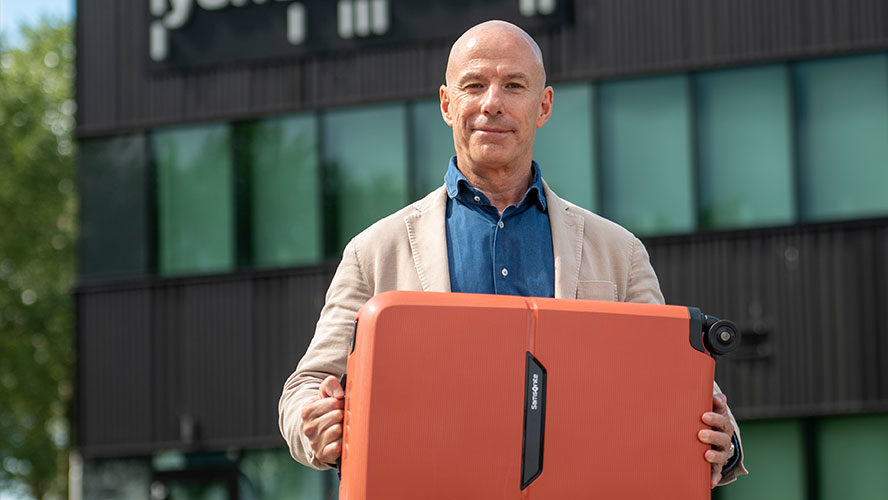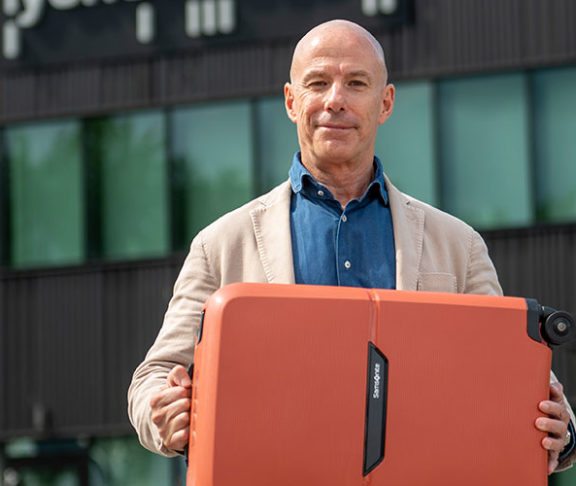Chemical production and emissions reduction must go hand in hand. From the alarm clock that wakes you up in the morning, the solar panels on your roof, the mobile phone charger you use through to the electric car you travel back home in; chemicals are vital and account for as much as 96 percent of everything that is produced. [1] LyondellBasell is a leader in the global chemical industry with an ambitious sustainability strategy. “Without chemicals it is impossible to meet the global climate targets from the Paris Agreement,” says Ronald van Klaveren, Vice President of Global Chemical Sales and Sustainability. We discuss with him how LyondellBasell reduces its CO2 emissions.
How is your company committed to reducing emissions?
“LyondellBasell recognizes the urgency of climate action. As a leader in the chemicals industry, our purpose is to create solutions for everyday sustainable living. We see sustainability as an opportunity. More than ever, it is central to the way we work and create value. Now and in the future.
We are committed to reducing emissions in our operations and value chain. We help our customers achieve their climate ambitions and contribute to a low carbon world. Our products help drive the energy transition and are used to create sustainable solutions. For example, in the production of solar panels, wind turbine blades and zero-emission cars.”
What does that mean in practice?
“We have some of the most ambitious goals in the industry. We want to reduce the CO2 emissions from our manufacturing processes and the energy we purchase by 42% by 2030.[2] These form of emissions are called scope 1 and 2 emissions. In addition, there are emissions in the value chain of suppliers, customers, and the use of our products. We do not have direct influence in the value chain which means that reducing these emissions is difficult. These are called scope 3 emissions and represent the biggest portion of the emissions we report as a company. We have committed to reduce these indirect emissions by 30% over the next seven years.[3] Furthermore, by 2050, our goal is to achieve net zero scope 1 and scope 2 greenhouse gas (GHG) emissions from our global operations.[4] A bit of a technical answer perhaps, but important to mention.
Then of course it’s about achieving these goals. That is why LyondellBasell is already implementing emissions reductions initiatives and plan for even more. A few examples include:
Low Carbon Energy: We are increasing our use of renewable and low carbon energy, primarily through power purchase agreements (PPAs) and collaboration with our utility suppliers. We have already secured nearly 75% of our target to procure at least 50% of electricity from renewable sources by 2030.
Electrification: We want to electrify part of our operations in Germany, and we are exploring the possibilities of designing, building, and operating a pilot electric steam cracking furnace in the US. At scale, it has the potential to reduce direct emissions from the cracker by up to 90%+. These are promising developments.
Alternative fuels: We are shifting to low-carbon fuels for our production. We have a leading research and development department that is constantly working on new technologies that improve sustainability. We are also working with others in industry to explore new, promising technologies, such as the production of hydrogen and ammonia.
Emerging Technologies: We welcome the recent approval by the Council of State to transport CO₂ from industry in the Port of Rotterdam and store this in empty gas fields under the North Sea – so called carbon capture and storage (CCS). CCS is a good first step to help reduce emissions. We are also exploring collaboration opportunities with different stakeholders to bring CO2 utilization approaches to technological and commercial maturity. We believe in the potential of CO2 utilization as an alternative to permanent storage. It has the potential to reduce scope 1 and 2 emissions through CO2 capture, and also to reduce scope 3 emissions by converting the captured CO2 to higher value chemicals that could replace current fossil-based feedstocks.
Exit from refinery: We are planning to close our refinery operations in the United States by no later than the first quarter of 2025. This closure is expected to lower our scope 1 and 2 GHG emissions by more than 3 million metric tons (MMT) annually and our scope 3 emissions by approximately 40 MMT annually.”
What about actions in the Netherlands?
“We have a long history here in the Netherlands, dating back to 1972, when we started up our biggest facility in the port of Rotterdam (Botlek). Today, we have five sites across the country, and are invested in achieving our goals and producing more renewable and low carbon solutions for our customers.
We have a track record of continuous innovation and improvement, our Botlek and Maasvlakte sites perform well above industry benchmarks in terms of CO2 emissions and energy efficiency.
We have a plastics recycling plant, Quality Circular Polymers (QCP), in Geleen. QCP has produced recycled content for use in everyday products such as Samsonite suitcases, structural parts for dryers, salt funnels for dishwashers, and dust bags for vacuum cleaners. We are also invested in Stiphout Industries, a company in Montfort involved in the sourcing and processing of post-consumer plastic packaging waste. Stiphout Industries has a processing capacity equivalent to the amount of plastic packaging waste produced annually by more than 500,000 Dutch citizens.
If we want to go further, then infrastructure is needed. According to our calculations, electrifying our operations alone means growing our grid connection capacity by 10 times bigger than its current size. A zero emissions future requires cooperation throughout the value chain. Whether it’s suppliers, customers, government, academics, or other industries, we need to align our actions. Without chemistry it is impossible to meet the global climate targets from the Paris Agreements.”
More Information
Want to know more about why, what, and how LyondellBasell is committed to sustainability? Check their report and information about the factors that could impact their forward-looking statements here.
[1] Deloitte, 2022
[2] Relative to a 2020 baseline
[3] Relative to a 2020 baseline
[4] Relative to a 2020 baseline


